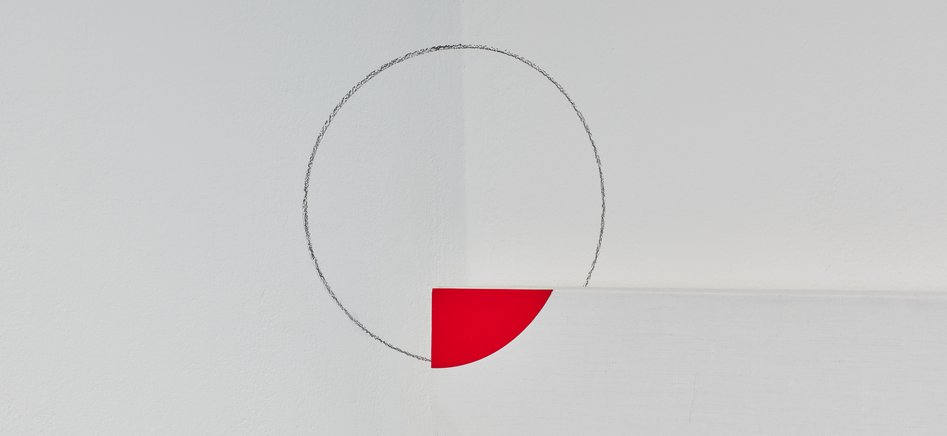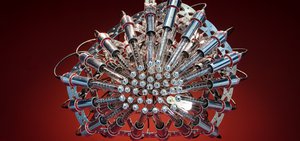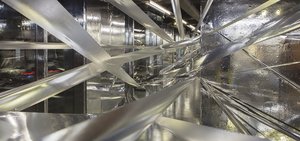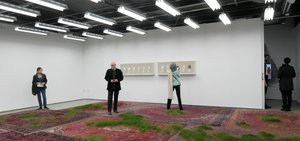2017 Artist of the Year: Kim Yong-Ik

Two Major UK Exhibitions to open from Korean Artist Kim Yong-Ik
Two Major UK Exhibitions to open from Korean Artist Kim Yong-Ik
Korean Cultural Centre | 26 September – 4 November 2017
As part of the Korea/UK season, Spike Island, Bristol and KCCUK, London join forces to present two complementary exhibitions of work by KCCUK Artist of the Year, Kim Yong-Ik (b. 1947).
Spike Island, Bristol and the Korean Cultural Centre UK, London announce two exhibitions from Korean artist Kim Yong-Ik (b. 1947), marking his first solo presentation in Europe. Kim’s 40 year career as an artist, activist and teacher – spanning a turbulent struggle from dictatorship to democracy in South Korea – has had a profound impact on the country’s modern art history, influencing many younger artists. The exhibition at Spike Island surveys an array of works from the 1970s onwards, whilst KCCUK presents new site-specific paintings which engage with the surrounding exhibition space. Part of the Korea/UK Season, a programme of extensive cultural events across the UK celebrating Korean creatives, these exhibitions provide a timely insight into Kim’s influential oeuvre.
At Spike Island, seminal early works produced under the influence of the Dansaekhwa movement (or ‘Korean Monochrome Painting’), are presented alongside later works that demonstrate his relentless questioning and deconstruction of contemporary art. A student of Park Seo-bo (a master of Dansaekhwa), Kim was first recognised in the late 1970s for his Plane Object works, a series of unstretched paintings which challenged the surface and material of the formal picture plane. Kim was invited to exhibit these works at the 1st Young Artists Exhibition held at the National Museum of Contemporary Art, Seoul in 1981. However, in opposition to the increasingly repressive military dictatorship in South Korea, Kim left the works enclosed in their cardboard shipping boxes, labelled with just their titles, dimensions, and materials. This gesture was to forecast his direction throughout the 1980s and 1990s.
During this period, Korea’s dominant artistic culture polarised the country between the so called Minjung art (people’s art) and Korean Modernism (which believed in paintings’ inherent tautology). Although Kim shared some common ground with the Minjung art movement, as both placed emphasis on institutional critique, Kim’s focus on conceptual and aesthetic exploration set him on a distinctive path. This is shown by his geometric compositions from the 1980s and ‘polka-dot’ paintings from the 1990s, also present in Spike Island’s exhibition.
Kim’s use of the omnipresent polka-dot, perhaps his most distinctly recognisable visual trait, calls into question the very foundations of painting – the canvas. While the dots are crisply applied, the canvas itself is subtly marked and soiled, these imperfections lying at odds with the formal language of the dots. He believed that “a good artwork would be okay even if it’s a bit torn or soiled or broken”, and that art should be made simply and cheaply. Untitled (on paperboard,1990) is an early example of the polka-dot series. In this work dots have been mechanically removed from the canvas, rather than depicted within the painting; presented not as voids however, the cut–outs represent instead a promise of new beginnings. In later versions of the polka-dot series, Kim’s dots break away from the picture plane, appearing to move beyond the canvas. Transcending the physical limits of the canvas, the artist encompasses the gallery’s architecture as part of his painting, thus challenging the role of the canvas as a necessary base for the image. These paintings provide the focal point for KCCUK’s exhibition, which will see new site specific works engage directly with the exhibition space.
Kim’s artistic and academic practice is not only characterised by his interest in aesthetics but also his belief in art’s ability to engage with the social realities of the time. His participation in various artists’ resistance movements, including the “Gwangju Biennale Normalisation Art-wide Committee”, which criticised the bureaucratisation of the biennale by ‘government-friendly artists and critics’ point to his disconnection with the art world and his ambition for reform. In 1999, along with the critic Lee Yeongwook, Hwang Se-jun and artist Park Chan-kyung, Kim founded Korea’s first artist run space “art space pool”. As an educator and writer, he produced a number of critical texts, rangeing from art criticism to writings on the future directions of public and private museums, galleries, and art education.
The exhibitions are co-curated by Helen Legg, director at Spike Island and Jeyun Moon, curator at the Korean Cultural Centre UK.
Kim Yong-Ik's exhibition at Spike Island takes place from 30 September to 17 December 2017.




